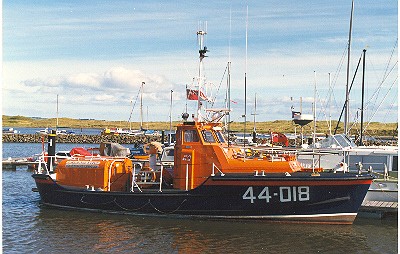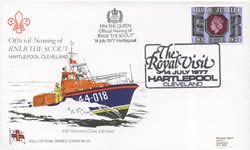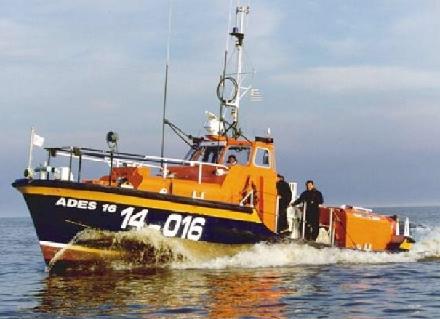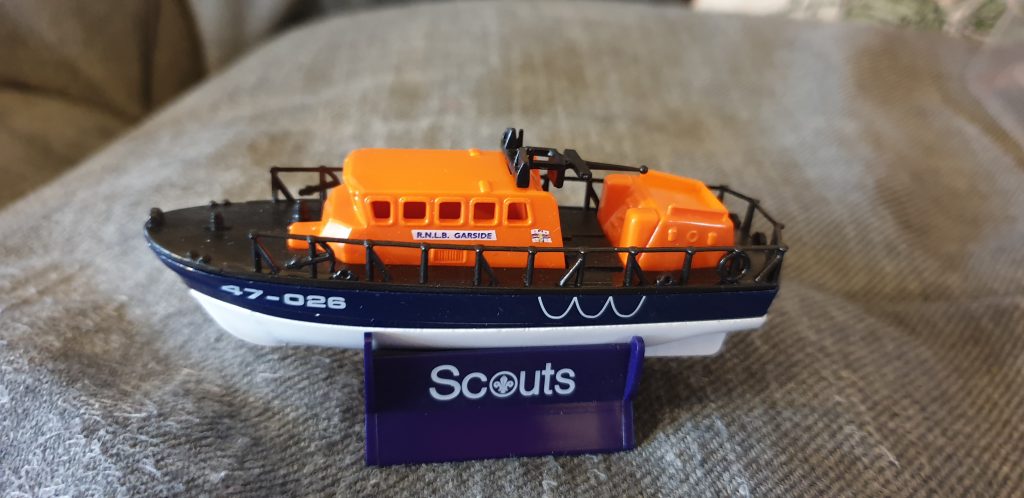RNLI LIFEBOAT CALLED "THE SCOUT"

In 1974, to mark the 150th anniversary of the founding of the RNLI, The Scout Movement embarked on a fund raising project throughout the UK with the object to fund a new lifeboat for the organisation, the movement raised £101,053 pounds of the £122,00 required to build this new lifeboat during 1975. In January of 1977 it set sail from Poole the HQ of the RNLI, for Harlepool. It was named “The Scout”, by the Queen on the 14 July 1977. It was given the registration number 44-018, it remained with the Hartlepool RNLI until 1997.

Details of “The Scout”
‘THE SCOUT” lifeboat was a 44’ steel hulled, self righting, fast afloat Waveney Class Lifeboat, with a maximum speed of 15 knots. She carried a crew of five and had capacity to carry twelve survivors.
The 44′ MLB was designed by the U.S. Coast Guard, with work starting on the prototype (USCG 44300) in April 1961, which was completed on the 9 March 1962. A total of 110, 44′ MLB’s were built for the U.S. Coast Guard, with the last boat (USCG 44409) being completed in 1972.
The Waveney Class was originally developed for the U.S. Coast Guard as the 44MLB, in the 1960’s, prototype production and trials were started in 1962, The 44′ MLB was designed by the U.S. Coast Guard, with work starting on the prototype (USCG 44300) in April 1961, which was completed on the 9 March 1962. A total of 110, 44′ MLB’s were built for the U.S. Coast Guard, with the last boat (USCG 44409) being completed in 1972.
The RNLI in Britain acquired the USCG 44328 in 1964 and built a further 21, naming the class “Waveney” after the river in which the first boats were built.
The Scout was the second of only five lifeboats ever to be named by a reigning monarch.
The “Scout” also had the un-envious title of the only British 44 ever to capsize. The Scout capsized twice whilst on service to the tanker Freja Svea that was dragging her anchor in storm force conditions in the Tees Bay on the 28th February. Whilst standing by the tanker in heavy seas the Teesmouth lifeboat was knocked down, losing one of her engines. The Hartlepool lifeboat The Scout was launched to escort the Teesmouth lifeboat back to station and then take over standby duties on-scene. Whilst close to the tanker in about 8 fathoms of water the Hartlepool lifeboat was capsized twice and crew member Robert Maiden was washed overboard. Teesmouth lifeboat re-launched to escort the Hartlepool lifeboat to the Tees and Robert Maiden was picked up by a RAF Seaking helicopter and taken to hospital, from where he was subsequently discharged.
After 20 years service she left to go into fleet reserve on the 29-9-97 and on the 18-11-97 “The Scout” was sold to to ADES (the Uruguay lifeboat service,) for service with Lifeboat Station No 1, Puerto del Buceo, Montevideo where she remains and is crewed by volunteers


During her 20 years service “The Scout” spent over 400 hours at sea, taking part in over 230 incidents, rescuing 86 people and saving property worth £800,00. When it was announced “The Scout” was going to be retired it was hoped that the Scouts would be able to raise enough funds to have it’s replacement carry the name “The Scout” to help with this task Lledo Models produced a souvenir model of a Lifeboat that would help raise the required funds, along with generous support from Kimberly-Clark.
This plan to have a new lifeboat called “The Scout” doesn’t seem to have come to anything, but if anyone can provide further information on this it would be very helpful.
